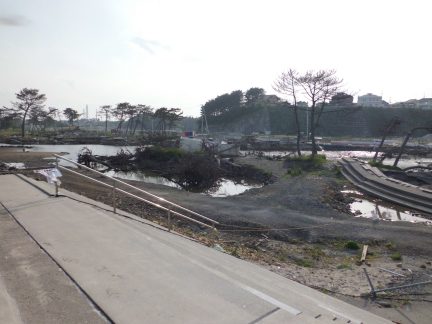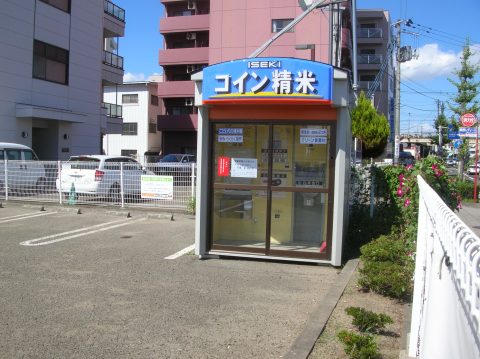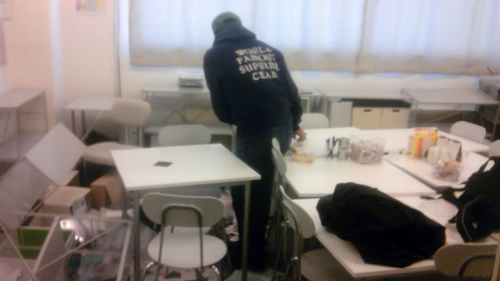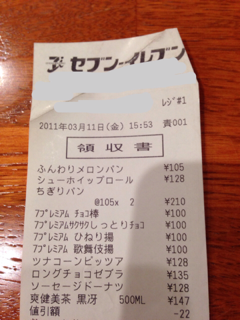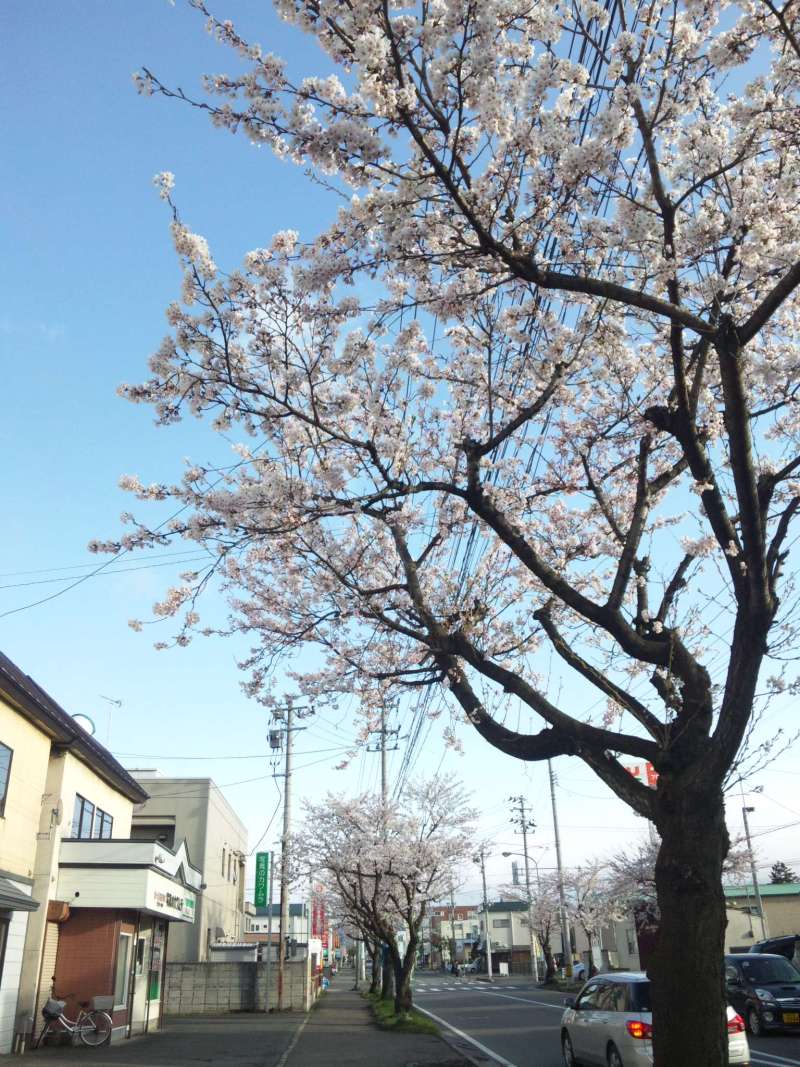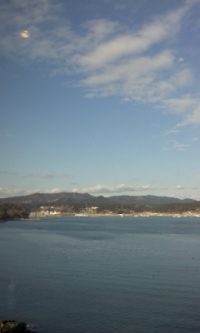The Case of a Solitary Person
Written by: MEME
Born and lives in Miyagi Prefecture. Same age as Mitsu Dan.
Bisexual uninterested in love or marriage.
Officially registered as and physically ♀.
At the time of the earthquake, I was living alone in an apartment in Aoba ward, Sendai.
My house was surprisingly undamaged.
Not one plate broke. Not one book fell from a shelf.
The water, electricity, and municipal gas were cut off—that was it.
I did not go to an evacuation center.
When I wasn’t at work, I mostly just stayed at home alone.
This is the story of such a solitary person.
It is a seldom-told story, but it is certainly more common that one might think.
I often heard the words “Oh, that’s it?” I said them myself. I said them to myself.
“Your lifelines were cut off. That’s it?”
“Your car was washed away. That’s it?”
“That’s it? That’s it?”
“You’re not a disaster victim at all.”
“You shouldn’t pretend to be a victim.”
“That’s it? That’s it?”
Recently, my thinking has started to change slightly. Most people focus only on the extensive damage, but the vast majority of “victims” suffered nothing more than interrupted lifelines. Disasters will almost certainly occur in the future, and the outcome will no doubt be the same. For this reason, it is very important to tell the tales of the experience of the overwhelming majority. With a little bit of preparation, the lines for buying food and collecting emergency rations will be shorter, and those resources can be allocated to those people who need them more.
One should not be making light of things by saying “Oh, that’s it?”
March 11, 2011, 2:46 PM
I was in a first floor conference room of a building located in the inland part of Sendai for work.
There had been an earthquake only a few days before. Again? I thought to myself as I ducked under the table for safety. This one’s a bit bigger. It was difficult to measure the magnitude of the temblor in a conference room with nothing but some flimsy tables and chairs.
After the shaking subsided, we all went outside. Water was flowing out of a cream-colored water tank and a large puddle had formed in the parking lot. Oh, did it really shake that much? It didn’t really feel like it, I thought.
Those who had come by car turned on their car radios. “An earthquake of magnitude 7 has struck Kurihara city in Miyagi Prefecture,” we heard. That was the same place that had been significantly damaged by an earthquake in 2008. “Kurihara again? That’s rough,” we whispered to each other, as though we were unaffected.
That day I was riding my bike. I rode around to see what I could see: Storefronts with broken glass; collapsed cinder block walls; water spouting up in the middle of the street, perhaps from a burst water main; long lines at convenience store counters. But such “unusual” sights were rather few, and in fact most of what I saw was “usual.” I would learn that normality had been lost to a greater extent than I had thought, but not until later.
The oldest in Tohoku, and the third oldest in Japan, one of the few public beaches in Miyagi Prefecture was still in this state more than a year after the earthquake and tsunami.
Even after four summers, there is still no timeline for its reopening to the public.
I used to come here to swim every year when I was a kid. I also enjoyed walking along the sandy beach in the winter.
I grew up in Tagajo in Miyagi Prefecture.
The city has a long coastline, but most of it is industrial and unfamiliar. To me as a child, the sea was associated with Shobutahama swimming area in Shichigahama, or the exciting Minato Matsuri Sea Festival in Shiogama, or Matsushima of “Three Most Scenic Spots of Japan” fame. I have no memory of the disaster prevention training we underwent in elementary and middle school to prepare us for tsunamis. I’m ashamed to say that I really didn’t think that a tsunami would ever hit Tagajo. Even as I listened to information gradually coming in on the night of March 11, I did not think for a moment that the destruction wrought by the tsunami would reach my parents’ home, located far from the shore.
I first learned that my parents’ home had been inundated by the tsunami on the morning of the 12th, when I was somehow able to get in touch with my parents, who were then taking refuge in a shelter.
Although I had just learned that my parents’ home had been hit by the disaster, there was nothing I could do for the time being.
After the earthquake there was a dearth of gasoline, which caused significant problems, but more importantly I didn’t have my own car. Our family car had been destroyed by the tsunami. The most I could carry by bicycle was enough water and food for one person. Even if I were to carry this heavy load and pedal for tens of kilometers to reach them, I would simply eat and drink the contents of what I’d brought before heading back home. What would be the point of going, in that case?
For the time being, my parents were unhurt, they had some stores of water and food, and they were able to sleep on the second floor of the house, which had avoided being damaged by the tsunami. They told me not to come because I would just be in the way, so I ended up leaving my parents to take care of themselves.

I had many things to do with my colleagues at our workplace, and so it turned out that after the earthquake I would commute from home to work and back, living a fairly “ordinary” life.
Each day I would hear on the news about the terrible conditions in the coastal areas. But the scenes I saw in town every day were not much different from those before the disaster.
For all that things seemed the same, even small differences would stand out and leave an impression.
Traffic lights were off, but traffic was able to run fairly smoothly.
There were long lines at gas stations. Sometimes small squabbles would break out. Sometimes someone in line would have a cigarette dangling from their mouth—which was certainly dangerous.
Speaking of cigarettes, cigarette vending machines also had long lines. Drink vending machines which were operational would also sell out instantly, except for their cans of coffee, which surprisingly went unpurchased. Normally I would expect the coffee to be a popular seller.
I was surprised to see long lines at coin-operated rice mill machines. People must have been storing away more brown rice than I expected. Perhaps that’s not so surprising in Miyagi, a well known rice-growing region.
Many people were wearing surgical masks, myself included. They help protect from catching a cold, and they’re convenient for hiding unmade-up faces and unshaved stubble. They are truly a necessity.
In fact, masks were used quite a lot afterwards, as well. I made my way to the tsunami-struck area many times from spring to summer of that year, and I kept a mask with me at all times, as the dried sludge would kick up like dust, the mephitic odor of decomposition was terrible, and flies buzzed about everywhere.
Picture: September 18, 2014 – Coin-operated rice mill
September 18, 2014, Miyagino-ku, Sendai.
Soon after the disaster, people carrying large bags of rice formed a long line in front of this machine.
I have never before or since seen such a long line at a rice milling machine.
The apartment at which I lived alone had its electricity and water restored quickly, and I was able to use them after a few days. Conversely, we were on the slower end in getting our municipal gas back up, and it was about one month before we were reconnected.
By the time our gas was restored, I was more or less able to buy groceries normally without any difficulty, and so my so-called “home refugee” period had lasted only one month.
During that month, the key to survival was in how I used my electricity.
People were trumpeting that we had to conserve electricity, but my gas was still out and electricity was my only source for creating heat, so there was no avoiding it.
I did have a portable stove, but I only had so many gas canisters stored up. Most stores were running very low on them, too, so I wanted to save them as much as possible.
I did not have an electric rice cooker (I cooked rice in an earthenware pot or a pressure cooker). I didn’t have an electric kettle either. I didn’t even have an electric stove element.
The one thing I did have with a heating element that could be used for cooking was a microwave with oven functionality.
Once our power came back on and I was able to use the internet, the first thing I researched was how to cook rice in a microwave. I found an incredibly useful technique for cooking rice written by a food researcher by the name of Sachiko Murakami. In fact, I still use her technique for cooking rice every day. I am forever indebted to Professor Murakami.
I used my microwave to boil water and cook meals, too. I had to do everything with just one microwave, which meant it took a lot of time and was quite annoying.
For your reference, here are some food and drink items which are very useful as stored emergency rations.
Vegetable juice:
I highly recommend this item. After the disaster there was a shortage of vegetables, but with the help of vegetable juice I was able to quickly and deliciously gain nutrients and rehydrate. I didn’t want to catch a cold while medical institutions were in such a state, so I would drink down vitamin capsules with vegetable juice while chanting “don’t catch a cold, don’t catch a cold.” I did not catch a cold, after all. That may have been due to the fact that I mostly didn’t go to evacuation centers or other crowded places.
Skim milk:
I also highly recommend this item. Milk has excellent nutritional properties, but if it’s not refrigerated it goes bad very quickly. Skim milk is more convenient, since it can be kept at room temperature for a long time. Of course it can be mixed with cold or hot water for drinking, but it can also be used for a wide variety of things, like mixing it into your cooking.
Grilled nori and dried wakame:
I also highly recommend these because they can be kept at room temperature for a long time and are high in nutritional value. I mixed these into cups of instant noodles or instant miso soup, or sometimes I simply ate them as is. It just so happens that Miyagi Prefecture is known for cultivating lots of nori. Even though I wasn’t born into an affluent household, I always ate high-end nori. For those of you who have only ever tasted inexpensive nori, I encourage you to try Miyagi Prefecture’s high-end nori.
Candy and gum:
When I wasn’t able to get enough water, candies and gum were very helpful. Sugarless gum even served as a sort of toothbrushing substitute. I happened to have a lot of candies and gum as souvenirs at my house, and when I brought them to share with my coworkers they were very happy.

During the one month it took for our gas to be reconnected, I did not take a bath.
The few public bathhouses in the area had long lines. When I heard that after standing in line for hours you could only bathe for 10 to 15 minutes, I lost interest in going.
I could have asked to use the bath in a house with propane gas or an electric water heater, but I couldn’t be bothered to go that far.
People found different ways to bathe themselves, be it heating up a sink-full of water and washing just their head, or using damp towels to wipe down their body, but such methods were too much work for me to bother with, and so I simply took a cold shower once a week.
Each time I felt like my heart would stop. Had it been midsummer that would have been one thing, but we’re talking about Miyagi in the winter when it’s still snowing outside. Doing such a thing while living alone, I don’t know what I would have done if I really had collapsed from a heart attack. Don’t try this at home.
Perhaps my repeated cold showers caused me to catch a chill, but when my first period since the earthquake came in April, my stomach hurt so badly I could hardly stand up. My periods are usually on the less painful side. Still, I was lucky that my period didn’t come immediately after the earthquake, when things were at their most chaotic.
Come to think of it, during that time I wet the bed once. It must have been the first time since kindergarten. Perhaps it was because of the cold showers, or perhaps the stress had been building up without my noticing it. I’m really glad I live alone. If I’d been in an evacuation center it would have been mortifying.
Because our water was restored quickly, I didn’t have to line up at the water truck.
The toilet flushed normally, too. However, when I heard that the water purification center was having a hard time managing and they were asking people to flush as little as possible, I started throwing out my toilet paper with the garbage. (As it happens, the garbage disposal plant was also struggling, so I made an effort to throw away as little as possible.) I decided to flush only once per day. Because I live alone, it was no big deal to me. I normally leave the toilet lid open all the time, but I closed it to keep the smell contained. I had always wondered why toilets have lids and thought them to be unnecessary, but I realized that they can be useful at times like this.
After about a year of keeping to this practice, I stopped for no particular reason. I had unilaterally decided that I had done enough.
More than three years after the earthquake, on June 30, 2014, I saw the following article in the Kahoku Shinpo morning news:
“Temporary sewage treatment facilities on the brink – Sendai’s recovering South Gamou Water Purification Center”
South Gamou Water Purification Center, which handles 70% of Sendai’s sewage, even operating full-time as a temporary facility for more than three years after the earthquake, was still only capable of operating at 75% of pre-earthquake levels. The facility was still in a precarious condition and was asking for people to refrain from using water and toilet paper as much as possible, according to the article.
It hit home hard that things had not gone back to normal at all.

For someone living alone, I think I was relatively well prepared.
I’ve heard stories from other single people, such as: “I don’t cook at home so I didn’t have any food stores. After the earthquake I had to line up to receive food rations”; or “I only use my credit card for groceries, so I had difficulty buying anything with only 50 yen in cash to my name.” It seemed as though many people didn’t have a radio or a flashlight. Single people are surprisingly helpless when a disaster strikes. But disaster prevention information for single people is disturbingly lacking. This is a dangerous situation.
I have no desire to ever get married. “No desire to get married” is in a way a type of sexual minority, but it’s different from homosexuality or bisexuality. It’s not because it is currently impossible to have a same-sex marriage under Japanese law. I have no desire to get married regardless of my partner’s sex. I also have no plans to have children. In other words, I have no intention of creating a new family.
My current state of singlehood is not a temporary phase, but one that will continue for the rest of my life. I think that’s why I was fairly well prepared for disaster.
Being a sexual minority comes in handy sometimes, I suppose. I hope that my experiences can be of some help to my fellow singles all over the country.

At 5:14 PM on June 12, 1978, the Miyagi Earthquake struck.
This happened before I was born, but I often heard the stories from my relatives, school teachers, and other adults around me. They were all little snippets of stories which I remember even now: “I was coaching a sports club when a fissure opened in the school courtyard right in front of us”; “I was in elementary school at the time, but I remember freezing in fear by the side of the road”; “cinder block walls collapsed all over the place”; “more than half of the water in the bathtub ended up on the floor”; or “the gas stopped so we brought out a charcoal brazier for cooking.” I now realize that such small anecdotes were pretty important.
As I recall, my science teacher in middle school once said that because of the blackout after the Miyagi Earthquake, the stars in the night sky were particularly beautiful to see that night.
The day after the earthquake, I remembered those words and looked up to the night sky.
Perhaps it was a bit cloudy, but it was not as beautiful as I had expected. Still I was able to see more stars in the sky than usual, and I felt a small bit of relief.
You never know what information will be useful someday.
■About terminology:
In Rainbow Archive Tohoku’s “Memoirs”, there are many terms related to sexuality which may be unfamiliar. The meaning of each term is given in the broadest sense in the glossary linked below.
Rainbow Archive Tohoku glossary of terms
For more information, please visit the Sexualities and Human Rights Network ESTO or see other websites and books related to sexuality.
■About Rainbow Archive Tohoku
Our group gathers, records, and transmits direct accounts from LGBT people and people of various sexualities. By widely asserting the existence of these overlooked minorities in local communities, we hope to help people better understand their differences and find respect for each other, to create a more harmonious society for all.
Our organization was founded in June 2013 by four groups operating out of Sendai in Miyagi Prefecture: Tohoku HIV Communications, Yarokko, Anego, and ♀×♀ Ochakko Nomikai, Sendai.
Contact: ochakkonomi@gmail.com (♀×♀ Ochakko Nomikai, Sendai)
*The rainbow is used all over the world as a symbol of sexual diversity.
| Recorded on | May 26, 2012 to September 18, 2014 | |
|---|---|---|
| Recorded by | MEME | |
| Recorded at | Shobutahama, Shichigahama, Miyagi-ken | |
| Series | ||
| Keywords |
|








